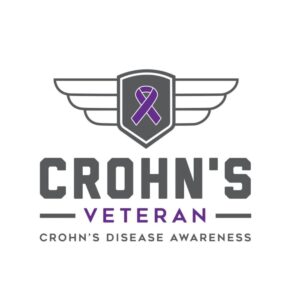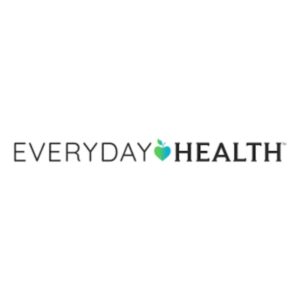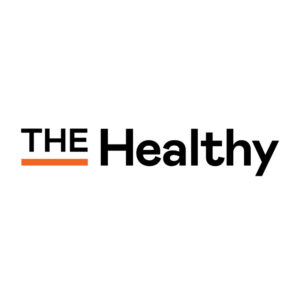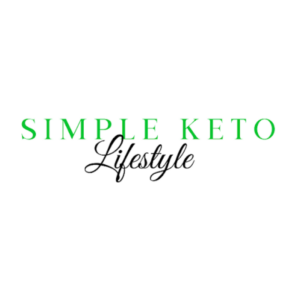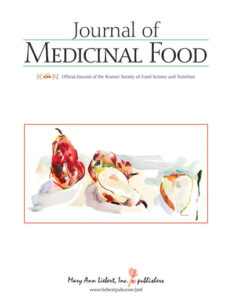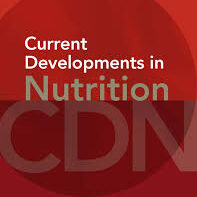Iron Deficiency Anemia 101: Everything You Need to Know About Iron for IBD
Danielle Gaffen, MS, RDN, LD
- Last Updated
Iron-deficiency anemia is unfortunately common for people with IBD to experience. My husband with Crohn’s disease has struggled with very low iron levels in the past (his Hemoglobin levels were at 7 at one point!).
Ever wonder why iron is so important, and what you can do to prevent and combat iron-deficiency anemia? If so, then continue reading.
What is iron and why do we care?
Iron is a mineral, and its main purpose is to carry oxygen (in the hemoglobin of red blood cells) throughout the body so cells can produce energy. Iron also helps remove carbon dioxide.
When the body’s iron stores become so low that not enough normal red blood cells can be made to carry oxygen efficiently, a condition known as iron deficiency anemia develops. When this happens, fatigue, weakness, and difficulty maintaining body temperature often result. Other symptoms may include pale skin and fingernails, dizziness, headache, rapid heartbeat, and an inflamed tongue (glossitis).
How do I know if my iron levels are low?
Your doctor can do a simple blood test to see where your current iron levels are and then your healthcare team can decide what the appropriate treatment should be for you!
Iron status has a variety of indicators. Here are the lab values that your doctor will look at when he/she checks your iron levels:
Serum or plasma ferritin:
This is the most sensitive indicator of iron deficiency and an indicator of the levels of your iron stores. [1] A low ferritin level usually indicates low iron stores.
Hemoglobin:
A low value indicates anemia.
Serum or plasma iron:
Indicates the amount of iron in the blood.
Transferrin:
Transferrin is the protein that transports iron to the bone marrow for production of hemoglobin. The plasma transferrin level is controlled by the size of the iron storage pool. When iron stores are depleted, transferrin synthesis increases. [2]
Total iron binding capacity:
Measures how well iron attaches to transferrin and other proteins in the blood.
What is Iron deficiency anemia
Interestingly, there are 4 stages of iron deficiency anemia [3]. When people think of full-blown anemia, they often think of the symptoms associated with the last stage of a chronic, long-term iron-deficiency like fatigue, lack of appetite, and even pica, especially pagophagia which is ice chewing.
Here are the 4 stages:
Stage 1:
Early negative iron balance.
This means that even though a person won’t necessarily feel symptoms, there’s a moderate depletion of iron stores. Basically, you’re taking away from your iron store reserves.
Stage 2:
Severe iron depletion.
You still won’t experience symptoms, but you’re really taking from your iron stores.
Stage 3:
Irony deficiency and you start to experience symptoms.
Stage 4:
Iron deficiency anemia, experiencing symptoms, and new red blood cells will be damaged when formed due to the lack of iron.
Your body’s red blood cells, which are the cells that need iron to function properly, have a life span of 3 months. When your body’s making new red blood cells, these may not form properly without having enough iron, so they’re damaged.
4 Common Causes of Iron Deficiency Anemia in IBD:
1. Inadequate dietary intake of iron rich foods without supplementation.
2. Inadequate absorption of iron resulting from diarrhea or drug interference
3. increased blood loss from Crohn’s disease, ulcerative colitis, or ulcers, as well as periods for women. [4]
4. increased destruction of iron from iron stores and defective iron use caused by chronic inflammation.
How Much Iron Do I Need?
While our bodies are very good at adapting to lower or higher levels by absorbing more or less iron as needed, the recommended levels are set to meet the needs of the greater majority of the population.
The amount of iron you need each day is measured in milligrams (mg). The general recommendations for healthy people are:
- Women (ages 19-50 years): 18 mg iron per day
- Women (ages 19-50 years): 27 mg if pregnant; 9 mg if breastfeeding
- Men (ages 19 years and older): 8 mg iron per day
- Older women (ages 51 years and older): 8 mg iron per day
The rate of absorption depends on a person’s iron status and iron stores [5]. The lower the iron stores, the greater the rate of absorption. Individuals with iron deficiency anemia can absorb 20-30% of dietary iron compared with 5-10% absorbed by those without iron deficiency.
What Foods are Good Sources of Iron?
Iron in food exists as two types: heme and non-heme. Animal foods such as meat, seafood and poultry provide both types and are better absorbed by the body.
Non-heme iron is found in plant foods, such as spinach and beans, grains that are enriched, like rice and bread, and some fortified breakfast cereals.
To increase the absorption of iron from plant sources [6], it’s recommended to eat them with meat, seafood, or poultry or a good source of vitamin C, such as citrus fruits, kiwi, strawberries or bell peppers. A good way to improve your iron intake is by eating a balanced, healthy diet that includes a variety of foods.
Below, please find how much iron is in a serving size as food:
Unless otherwise noted, all foods are cooked: meat is roasted, fish is cooked with dry heat, and vegetables are cooked from fresh. Fruit is raw.
This is a guide. Actual values may vary depending on the product and/or processing. Vegetables and/or beans that are frozen or canned may have higher iron values. Iron-fortified foods may vary widely in the amount of iron they have [7].
High Iron Foods (contain more than 2 mg) |
Moderate Iron Foods (contain 1-2 mg) |
Low Iron Foods (contain less than 1 mg) |
|
· Bagel, 4″: onion, sesame, or poppy seed 1 each = 5.4 mg · Bagel, 4″: egg or raisin 1 each = 3.5 mg · Beans, baked with pork ½ cup = 4.5 mg · Beans, kidney ½ cup = 2.6 mg · Beans, lima or navy ½ cup = 2.3 mg · Beans, white, canned ½ cup = 3.9 mg · Beef liver 3 oz = 5.2 mg · Beef, ground 3 oz = 2.2 mg · Beef, veal, or lamb 3 oz = 3 mg · Biscuits, 4″ 1 each = 2.9 mg · Cereal, 100% iron-fortified bran or whole grain ½ cup = 9-12 mg · Cereal, other ½ cup = 2-7 mg · Chex mix 2/3 cup = 7 mg · Chicken liver 3 oz = 10.8 mg · Chickpeas (garbanzo beans) ½ cup = 2.5 mg · Clams 3 oz = 6.3 mg · Clams, canned 3 oz = 23.8 mg · Cream of wheat ½ cup = 5.2 mg · Dried peas, cooked ½ cup = 2 mg · Fish, sardines 3 oz = 2.5 mg · Grits, instant, prepared ½ cup = 7.1 mg · Lentils ½ cup = 3.5 mg · Muffin, English or bran 1 each = 2.3 mg · Oatmeal, instant, fortified ½ cup = 5 mg · Oysters 3 oz = 13.2 mg · Pork 3 oz = 2.7 mg · Pretzels 2 oz = 3.1 mg · Seeds, pumpkin 1 oz = 4.2 mg · Shrimp 3 oz = 2.6 mg · Soy milk 1 cup = 2.7 mg · Soybeans ½ cup = 4.4 mg · Spinach, canned, cooked, or raw ½ cup cooked, 1 cup raw = 3 mg · Tofu, firm ½ cup = 3.4 mg · Tomato paste ½ cup = 3.9 mg · Vegetable or soy burger 1 patty = 2.9 mg · Waffle, 4″ 1 each = 2.3 mg
|
· Asparagus, canned 6 spears = 2 mg · Beans, baked, plain ½ cup = 1.5 mg · Beans: black, pinto, or great northern ½ cup = 1.8 mg · Beans: kidney or garbanzo, canned ½ cup = 1.6 mg · Beets, canned ½ cup = 1.5 mg · Brussels sprouts ½ cup = 1 mg · Chicken breast 3 oz = 1.1 mg · Egg 1 large = 1 mg · Egg substitute, liquid ¼ cup = 1.3 mg · Figs, dried 5 each = 2 mg · Fish, tuna, canned 3 oz =1.3 mg · Fish, mackerel 3 oz = 1.3 mg · Greens: collards or beet (fresh), turnip (frozen) ½ cup = 1.2-1.6 mg · Greens, Swiss chard ½ cup = 2 mg · Molasses 1 Tbsp = 1.5 mg · Mushrooms ½ cup = 1.4 mg · Noodles, egg, enriched ½ cup = 1.2 mg · Nuts: almonds or pistachios ¼ cup = 1.3 mg · Nuts: pinenuts or cashews 1 oz = 1.6 mg · Nuts: walnuts or mixed 1 oz = 1 mg · Peas, green, frozen ½ cup = 1.2 mg · Pita, 4″ round 1 each = 1 mg · Potato, baked with skin 1 medium = 1.9 mg · Prune juice ½ cup = 1.5 mg · Pumpkin, canned ½ cup = 1.7 mg · Roll, hamburger or hotdog 1 each = 1.4 mg · Sauerkraut, canned ½ cup = 1.7 mg · Seeds: sesame or sunflower 1 oz = 1.2 mg · Spinach, frozen ½ cup = 2.5 mg · Sweet potato, baked with skin 1 medium = 1.1 mg · Tomato sauce ½ cup = 1.3 mg · Tomatoes, canned, sauce ½ cup = 1.3 mg · Tortilla, flour 1 each = 1 mg · Turkey, dark meat 3 oz = 2 mg · Turkey, light meat 3 oz = 1.1 mg · Wheat germ 2 Tbsp = 1.2 mg
|
· Beans, green or yellow ½ cup = 0.6 mg · Blackberries ½ cup = 0.5 mg · Bread, white or wheat 1 slice = 0.7 mg · Brussels sprouts ½ cup = 0.9 mg · Broccoli ½ cup = 0.6 mg · Carrots ½ cup = 0.3 mg · Cauliflower ½ cup = 0.2 mg · Cheese, ricotta ½ cup = 0.5 mg · Corn 1 ear or ½ cup = 0.4 mg · Cornmeal 2 Tbsp = 0.8 mg · Cucumber with peel, raw ½ cup = 0.1 mg · Egg yolk 1 large = 0.5 mg · Eggplant ½ cup = 0.2 mg · Fish: perch, halibut, orange roughy 3 oz = 0.8-1.0 mg · Greens: kale, mustard, dandelion ½ cup = 0.5- 0.9 mg · Grits, prepared ½ cup = 0.7 mg · Lettuce 1 cup = 0.3 mg · Milk, all kinds 1 cup = <0.1 mg · Oatmeal ½ cup = 0.9 mg · Orange juice ½ cup = 0.6 mg · Pasta, spaghetti, or macaroni, enriched ½ cup = 0.9 mg · Prunes 5 each = 0.5 mg · Raisins, seedless ¼ cup = 0.7 mg · Rice ½ cup = 0.5 mg · Tomato juice ½ cup = 0.6 mg · Tomato, fresh 1 medium = 0.3 mg · Tuna, canned 3 oz = 0.8 mg · Watermelon 1/8 medium = 0.5 mg · Zucchini, squash ½ cup = 0.6 mg
|
Sources: US Department of Agriculture Agricultural Research Service. USDA National Nutrient Database for Standard Reference and Nutrient Data Laboratory; NutritionData.com. Nutrition Facts and Information.
Getting Enough Iron While Vegetarian
While it’s possible to find foods that meet your nutritional needs while being vegetarian or vegan, it requires some creative thinking and extra steps of planning to make sure you’re hitting your target daily macros and micro-nutrients (vitamins, minerals, and especially probiotics for UC). The planning can get trickier if you have some trigger foods or foods you can’t tolerate too.
But if you’re up for planning out your day ahead to make sure you’re getting enough nutrients, then it’s possible! In my experience, clients have come to me feeling frustrated because they feel the food options they have are limited. So a registered dietitian can help you find foods that meet your nutrition needs and fit with your lifestyle.
6 Tips for Boosting Iron Absorption
The amount of iron the body absorbs varies, depending on several factors. For example, the body will absorb more iron from foods when iron stores are low and will absorb less when stores are sufficient.
When your iron levels and stores are low, use these 6 tips to enhance iron absorption:
- If possible, aim to include one iron source per meal. The body absorbs 2-3 times more iron from animal sources than from plant sources [8]. Including animal-based (heme) and plant-based (non-heme) iron at the same meal can help absorption.
· Including foods high in vitamin C with plant-based sources of iron, such as citrus juice and fruits, melons, dark green leafy vegetables, and potatoes with your meals will help your body absorb more iron. (see below for a list of fruits and veggies high in vitamin C)
· Cook foods in a cast iron skillet; this can increase the iron content of food up to 30 times [9].
o (If you’re like me and don’t like to clean a cast iron skillet, there are small iron fish that you can pop into the dishes you’re cooking to boost the iron inside (one example is Lucky Iron Fish (#notsponsored), but you may find cheaper versions on Amazon too).
· Some foods decrease absorption of iron [10]. When eating iron-rich foods, avoid eating high-calcium foods (such as milk and yogurt) and coffee or tea (both decaf and regular). Drink coffee or tea between meals rather than with a meal.
· Some cereals contain 18 mg iron per serving (such as Total, 100% bran flakes, Grapenuts, and Product 19). Having ¾ cup of your preference will ensure your daily iron intake.
· Read food labels and choose breads and cereals that contain 20% or more of the Daily Value (%DV) for iron.
Fruits and Veggies with Vitamin C
Fruits with Vitamin C
(melon, mango, and oranges are naturally lower in fiber, but juiced fruits will provide the same amount of vitamin C with the least fiber)
- papaya
- strawberries
- pineapple
- kiwi fruit
- orange
- mango
- cantaloupe
- honeydew
- raspberries
- tangerine
- lemon
- lime
- blueberries
Veggies with Vitamin C
- red bell peppers
- tomatoes (and tomato juice)
- sweet green peppers
- potatoes
Supplements and Side Effects
If you have iron-deficiency anemia and aren’t able to tolerate foods with enough iron, your doctor may talk to you about oral iron supplements. If this is the case, note that oral iron supplements are best absorbed on an empty stomach [11].
It stinks that iron is best absorbed when the stomach is empty, because very common side effects of GI irritation include nausea, bloating, discomfort, heartburn, diarrhea, and/or constipation. If these side effects occur, it can help to take the iron supplements with meals instead of on an empty stomach. Unfortunately, this sharply reduces how much of the iron supplement can be absorbed.
If you have to take the supplement with food due to side effects, I’d recommend consuming the iron supplements with iron-rich foods as they can boost each other’s absorption.
Supplements that may be gentler on the stomach:
· “Chelated” forms of iron (that means they’re combined with amino acids, the building blocks of protein), are more bioavailable than non-chelated iron (this means that our bodies absorb the iron more easily) [12]. Because it’s absorbed more easily, chelated iron causes less GI disturbances than regular iron supplements because it’s needed in lower doses when it’s absorbed into your cells.
· On a personal note, my husband has crohn’s and he can tolerate liquid iron supplements.
Talk to your doctor about your oral iron supplement options and which may be recommended for you!
Infusions
An iron infusion may be given if a person’s blood counts are so low that taking iron supplements or increasing their daily intake of iron-containing foods would be ineffective or too slow in increasing their iron levels [13].
Alternatively, some people with IBD may not be able to tolerate taking an oral iron supplement and may benefit from an iron infusion.
Many doctors will break up the iron infusion into two sessions, to essentially give two doses of iron at least one week apart (because If a person receives too much iron too quickly, they may be at greater risk for adverse side effects from the infusion).
An individual can experience some mild side effects for 1-2 days after an iron infusion.
Side effects can include:
· a headache
· metallic taste in the mouth
· joint pain
· constipation
· dizziness
· loose bowel movements
· nausea
· swelling
Ideally, the symptoms a person experiences due to low iron levels will start to resolve as the amount of iron in the blood increases. This can take several weeks as the iron infusions help to build a person’s iron stores back up.
Now after you have received the iron infusion, depending on your cause of the low iron, it may be worthwhile to discuss foods high in iron to boost your iron intake, as well as ways to boost the iron’s absorption.
**Interested in a sample high-iron meal plan? Feel free to contact me and I can send it straight to you**
Are you interested in creating a customized game plan to find ways to boost your iron intake and absorption, starting with foods first, if we can? If so, let’s chat. I’d be happy to provide you with a complimentary 30-minute virtual chat to hear more about your specific nutritional concerns and to share how I can help you!
References:
1. Koperdanova, Marianna, and Jonathan O. Cullis. “Interpreting Raised Serum Ferritin Levels.” BMJ 351 (August 3, 2015): h3692. https://doi.org/10.1136/bmj.h3692.
2. Soldin, Offie P., Laura H. Bierbower, James J. Choi, Jennifer J. Choi, Savannah Thompson-Hoffman, and Stehven J. Soldin. “Serum Iron, Ferritin, Transferrin, Total Iron Binding Capacity, Hs-CRP, LDL Cholesterol and Magnesium in Children; New Reference Intervals Using the Dade Dimension Clinical Chemistry System.” Clinica Chimica Acta; International Journal of Clinical Chemistry 342, no. 0 (April 2004): 211–17. https://doi.org/10.1016/j.cccn.2004.01.002.
3. Merck Manuals Professional Edition. “Iron Deficiency Anemia – Hematology and Oncology.” Accessed April 19, 2021. https://www.merckmanuals.com/professional/hematology-and-oncology/anemias-caused-by-deficient-erythropoiesis/iron-deficiency-anemia.
4. Kaitha, Sindhu, Muhammad Bashir, and Tauseef Ali. “Iron Deficiency Anemia in Inflammatory Bowel Disease.” World Journal of Gastrointestinal Pathophysiology 6, no. 3 (August 15, 2015): 62–72. https://doi.org/10.4291/wjgp.v6.i3.62.
5. Gulec, Sukru, Gregory J. Anderson, and James F. Collins. “Mechanistic and Regulatory Aspects of Intestinal Iron Absorption.” American Journal of Physiology. Gastrointestinal and Liver Physiology 307, no. 4 (August 15, 2014): G397-409. https://doi.org/10.1152/ajpgi.00348.2013.
6. Prentice, Andrew M., Yery A. Mendoza, Dora Pereira, Carla Cerami, Rita Wegmuller, Anne Constable, and Jörg Spieldenner. “Dietary Strategies for Improving Iron Status: Balancing Safety and Efficacy.” Nutrition Reviews 75, no. 1 (January 2017): 49–60. https://doi.org/10.1093/nutrit/nuw055.
7. Uauy, Ricardo, Eva Hertrampf, and Manju Reddy. “Iron Fortification of Foods: Overcoming Technical and Practical Barriers.” The Journal of Nutrition 132, no. 4 Suppl (April 2002): 849S-52S. https://doi.org/10.1093/jn/132.4.849S.
8. Skolmowska, Dominika, and Dominika Głąbska. “Analysis of Heme and Non-Heme Iron Intake and Iron Dietary Sources in Adolescent Menstruating Females in a National Polish Sample.” Nutrients 11, no. 5 (May 10, 2019). https://doi.org/10.3390/nu11051049.
9. Geerligs, P. D. Prinsen, B. J. Brabin, and A. a. A. Omari. “Food Prepared in Iron Cooking Pots as an Intervention for Reducing Iron Deficiency Anaemia in Developing Countries: A Systematic Review.” Journal of Human Nutrition and Dietetics: The Official Journal of the British Dietetic Association 16, no. 4 (August 2003): 275–81. https://doi.org/10.1046/j.1365-277x.2003.00447.x.
10. Zijp, I. M., O. Korver, and L. B. Tijburg. “Effect of Tea and Other Dietary Factors on Iron Absorption.” Critical Reviews in Food Science and Nutrition 40, no. 5 (September 2000): 371–98. https://doi.org/10.1080/10408690091189194.
11. 11903Piron.pdf. Accessed April 19, 2021. https://www.ouh.nhs.uk/patient-guide/leaflets/files/11903Piron.pdf
12. Abdel Moety, Ghada Abdel Fattah, Ahmed Mahmoud Ali, Reham Fouad, Wafaa Ramadan, Doaa Shafie Belal, and Hisham Mamdouh Haggag. “Amino Acid Chelated Iron versus an Iron Salt in the Treatment of Iron Deficiency Anemia with Pregnancy: A Randomized Controlled Study.” European Journal of Obstetrics, Gynecology, and Reproductive Biology 210 (March 2017): 242–46. https://doi.org/10.1016/j.ejogrb.2017.01.003.
13. Auerbach, Michael, and Thomas Deloughery. “Single-Dose Intravenous Iron for Iron Deficiency: A New Paradigm.” Hematology: The American Society of Hematology Education Program 2016, no. 1 (December 2, 2016): 57–66. https://www.ncbi.nlm.nih.gov/pmc/articles/PMC6142502/








